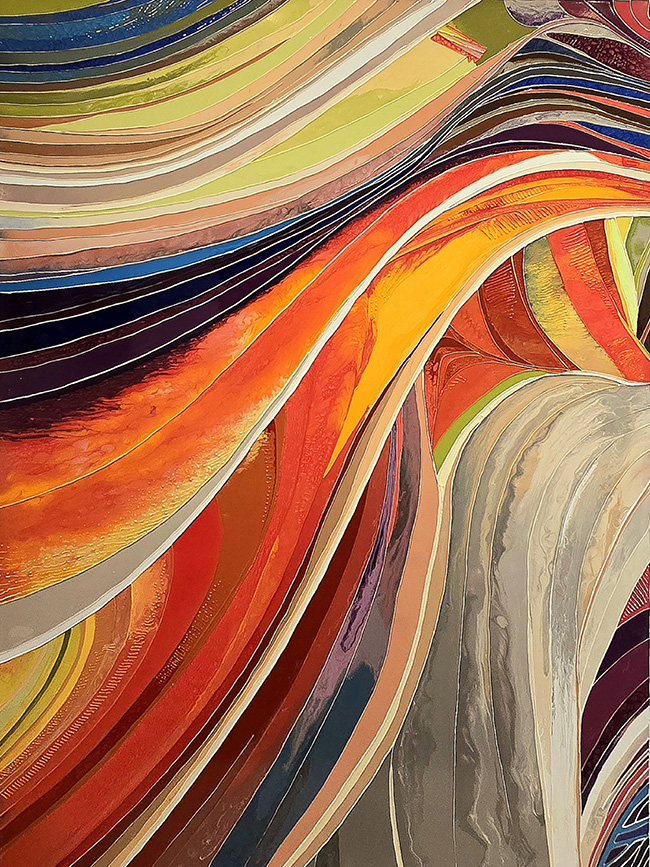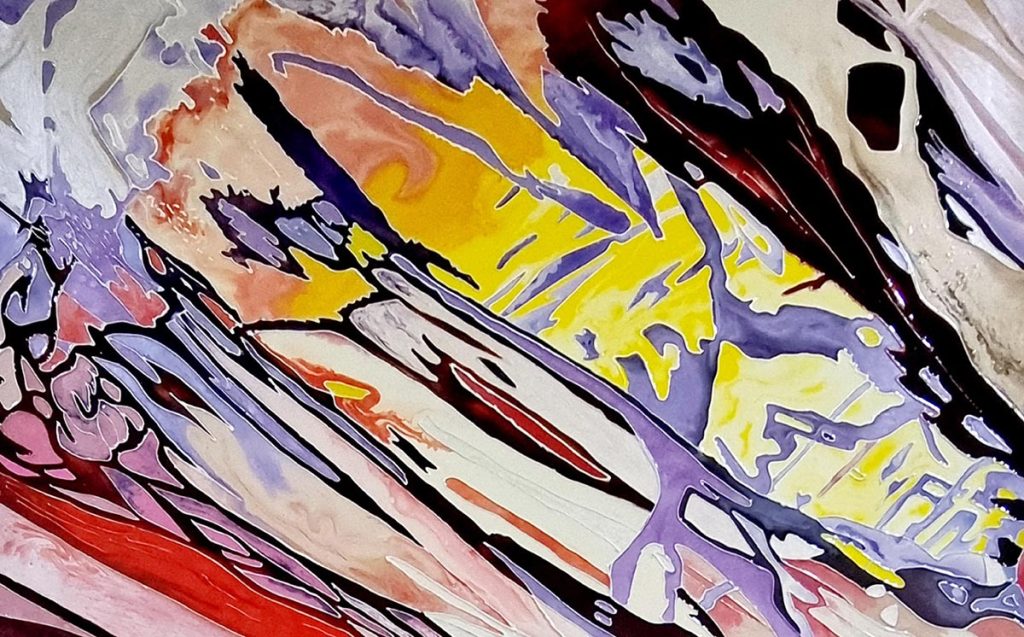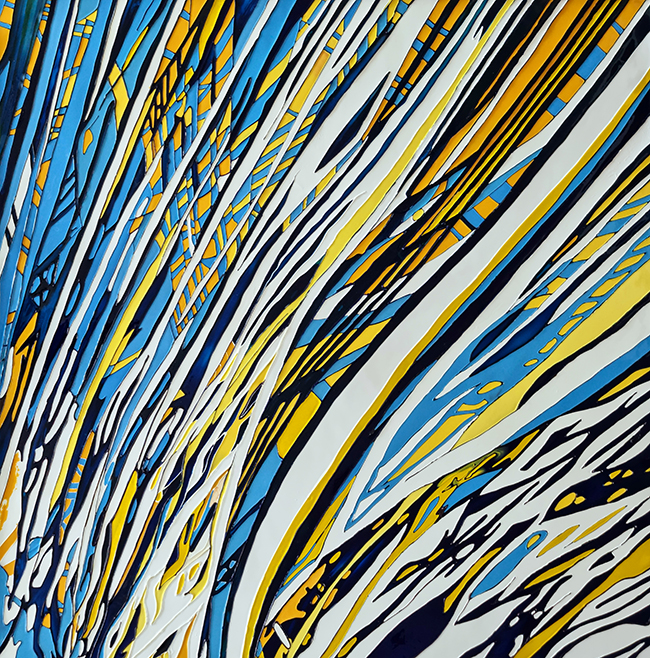Sabrina Puppin doesn’t paint to replicate what’s already visible—she paints to stir something deeper. Her canvases are loud with movement, full of color that almost vibrates off the surface. With exhibitions spanning cities like New York, Doha, and Miami, and reaching across Europe and Asia, she has developed a visual language rooted in emotion, abstraction, and instinct. Her work doesn’t sit still or ask for quiet admiration—it demands engagement. It wants to be felt.
Her paintings reject realism in favor of something more personal. They take in moods, memories, and dreams, and spit them back out as shape and color. Puppin doesn’t give you a story. She gives you the setting, the rhythm, and the weather—and leaves you to decide what’s happening. The result feels more like stepping into a state of mind than viewing a static image.

In GALE (2025), everything revolves around motion. Fiery oranges and reds twist across the canvas like wind pushed through flame. But just when the temperature threatens to overwhelm, blues and greys cool the space down, making room to breathe. This push and pull keeps the piece in balance—never still, never out of control.
Texture plays a crucial role. Paint builds up in places, drawing your eye into the surface. The marks feel intentional, but not overthought—like someone caught between impulse and planning. Puppin’s transitions between color are both spontaneous and restrained, echoing the give-and-take of real emotion. The piece doesn’t ask to be studied so much as entered, like stepping into a storm that’s already in motion.

STORM 3 (2023) feels like a celebration with no fixed center. Bright purples, reds, yellows, and greens collide in a swirling dance. The composition is loose and alive, as if the paint never dried. The colors seem to chase one another, jockeying for attention. But the result isn’t chaos. There’s a beat to the movement, a pattern inside the frenzy.
You can picture Puppin painting this with her whole body—wide strokes, fast decisions. The marks are bold, full of energy. They don’t tiptoe or second-guess. Each gesture builds off the one before it, keeping the piece held together even as it seems to spin apart. It’s visual noise with a kind of music in it.

Then comes WAITING (2023), which slows everything down. Blues and yellows stretch across the canvas in long, curving lines. White spaces open between the motion, letting the painting breathe. It feels suspended in time—like a breath held, a thought forming. The energy is still there, but it’s restrained.
Within this calm, Puppin introduces structure. Tiny geometric forms—grids, repeating shapes—punctuate the fluid lines. They act as grounding points, a kind of counterweight to the looser marks. The tension between those ordered patterns and the sweeping strokes is what gives the painting its quiet strength. Nothing dominates. Instead, everything holds together in a delicate standoff.
Taken together, these three works reveal Puppin’s larger intent. She’s not documenting the visible world. She’s tracing the contours of something more internal. Her paintings offer no clear path, no defined message. They ask for presence, not interpretation. They give you sensation and let you fill in the rest.
And that’s the real appeal of Puppin’s work. It’s not about answers. It’s about giving you space—to wander, to reflect, to feel. She doesn’t prescribe meaning or insist on a single way to view her work. She offers a kind of open terrain. Her abstraction doesn’t just bend perception—it opens it up. It leaves you with a question: not just what are you seeing, but how are you seeing it?

